Abstract
An investigation of staphylococcal epidemiology was undertaken at an Australian National Antarctic Research Expedition station during 1965-1966. It concerned the carriage of staphylococci by the men and their dogs, and the occurrence of staphylococci in the station environment. The year-long study indicated that coagulase-negative strains survived better in the Antarctic environment than coagulase-positive strains. It was demonstrated that naturally acquired coagulase-positive strains could not maintain colonization on forearm skin under the usual cold exposure experienced at Mawson station, though coagulase-negative skin strains appeared to thrive during the winter. Staphylococcus albus and S. aureus were able to persist in the anterior nares, despite the sometimes lower temperatures recorded in this micro-climate, probably because of the greater humidity and denser populations found there. The majority of the nasal carriers of S. aureus were persistent carriers, only two men in 27 being found to be occasional carriers of nasal strains, which was consistent with the observation that transfer of this pathogen from man to man is not common under Antarctic conditions. Half of the 27 sledge dogs at the station were found to carry coagulase-positive staphylococci but this did not appear to be of pathological significance to their human handlers. The local inanimate environment, including mess hut, sleeping huts and sleeping bags used on expeditions, was searched for contamination by S. aureus but none was detected.
Full text
PDF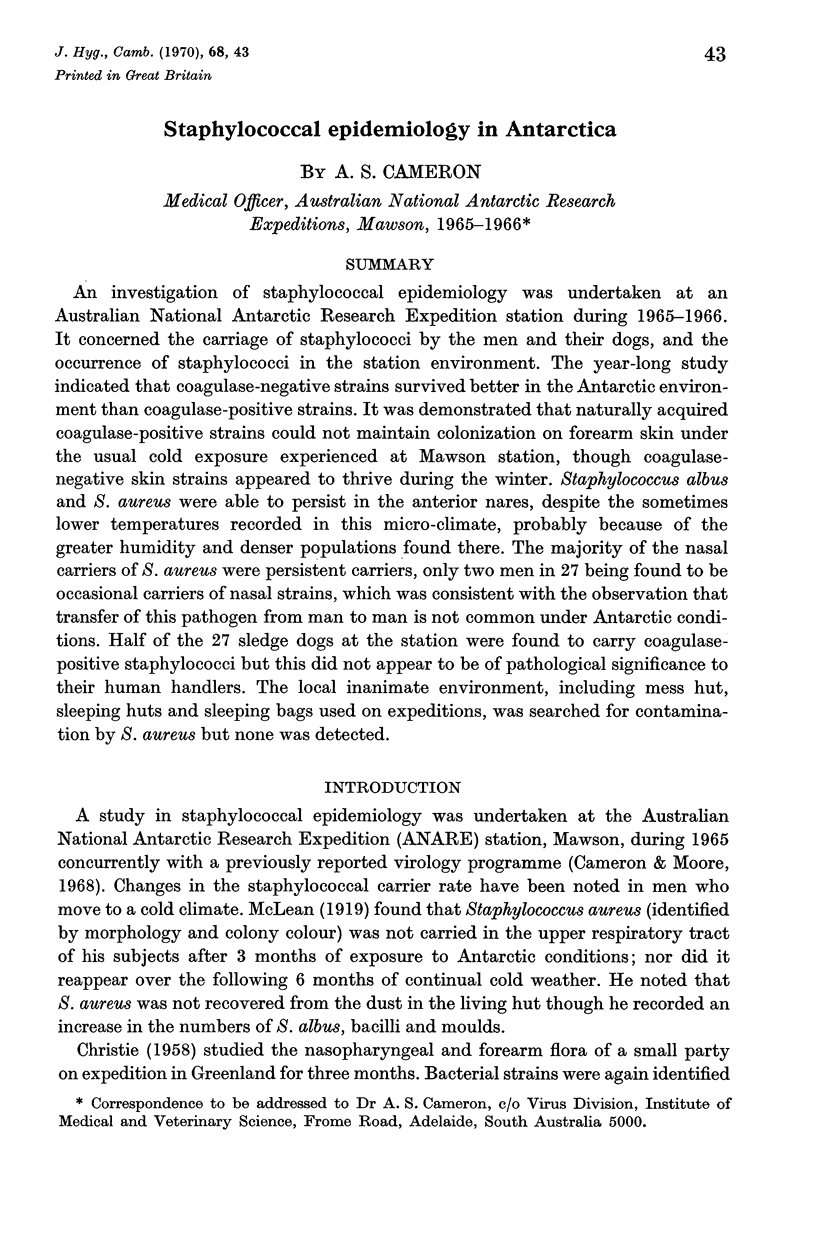
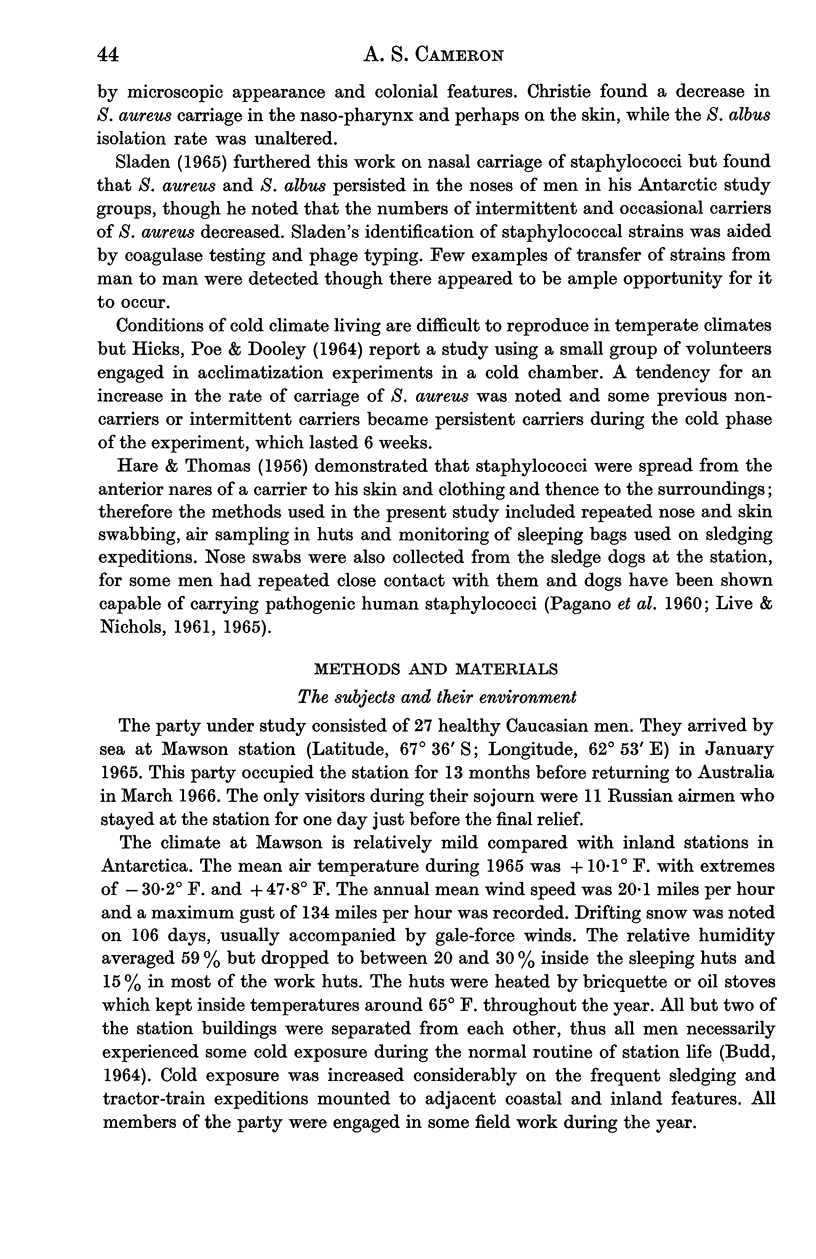
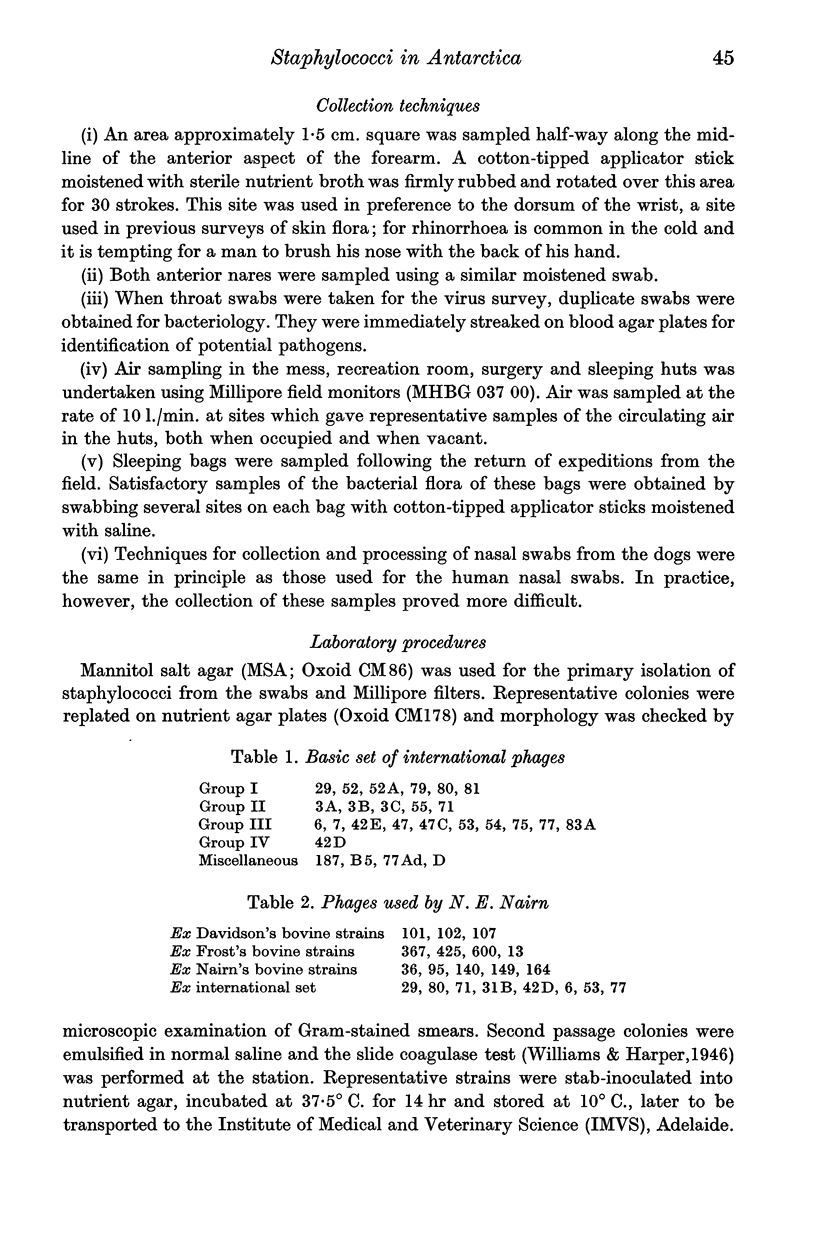
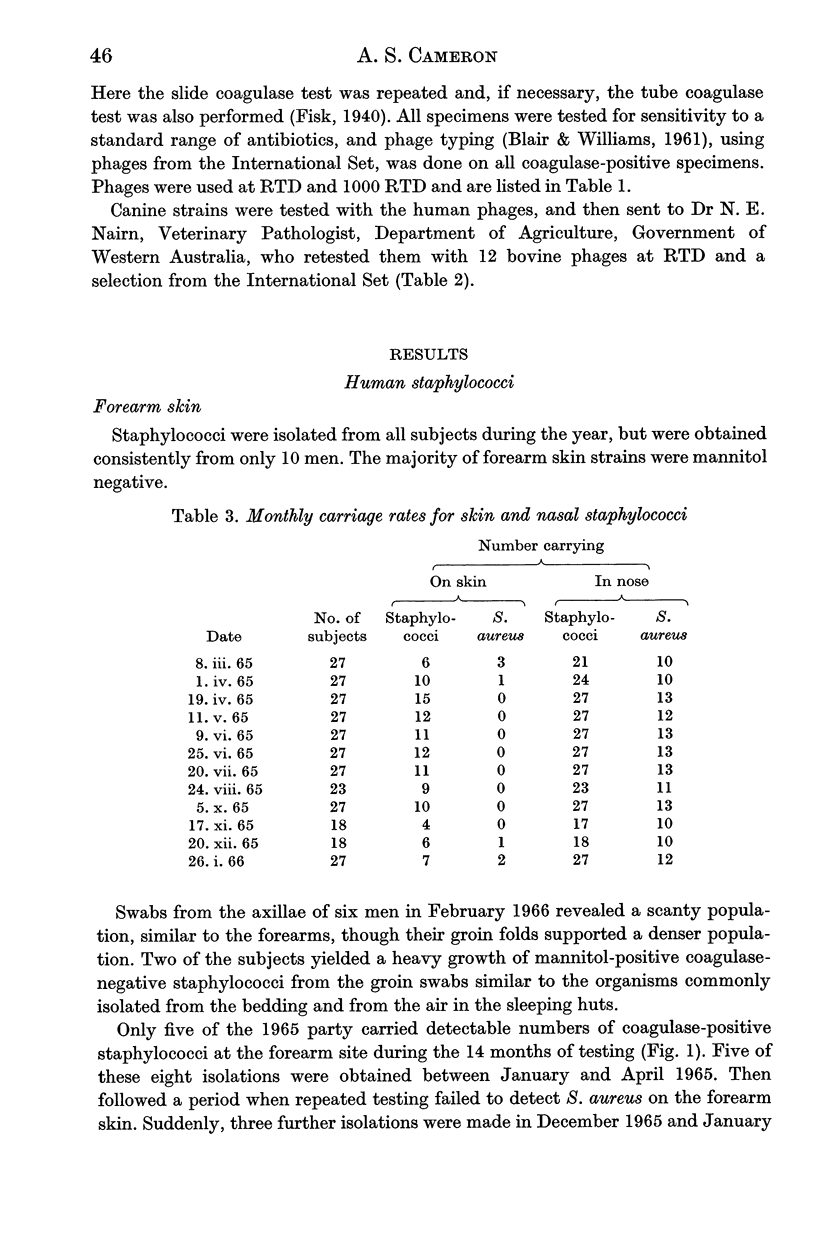

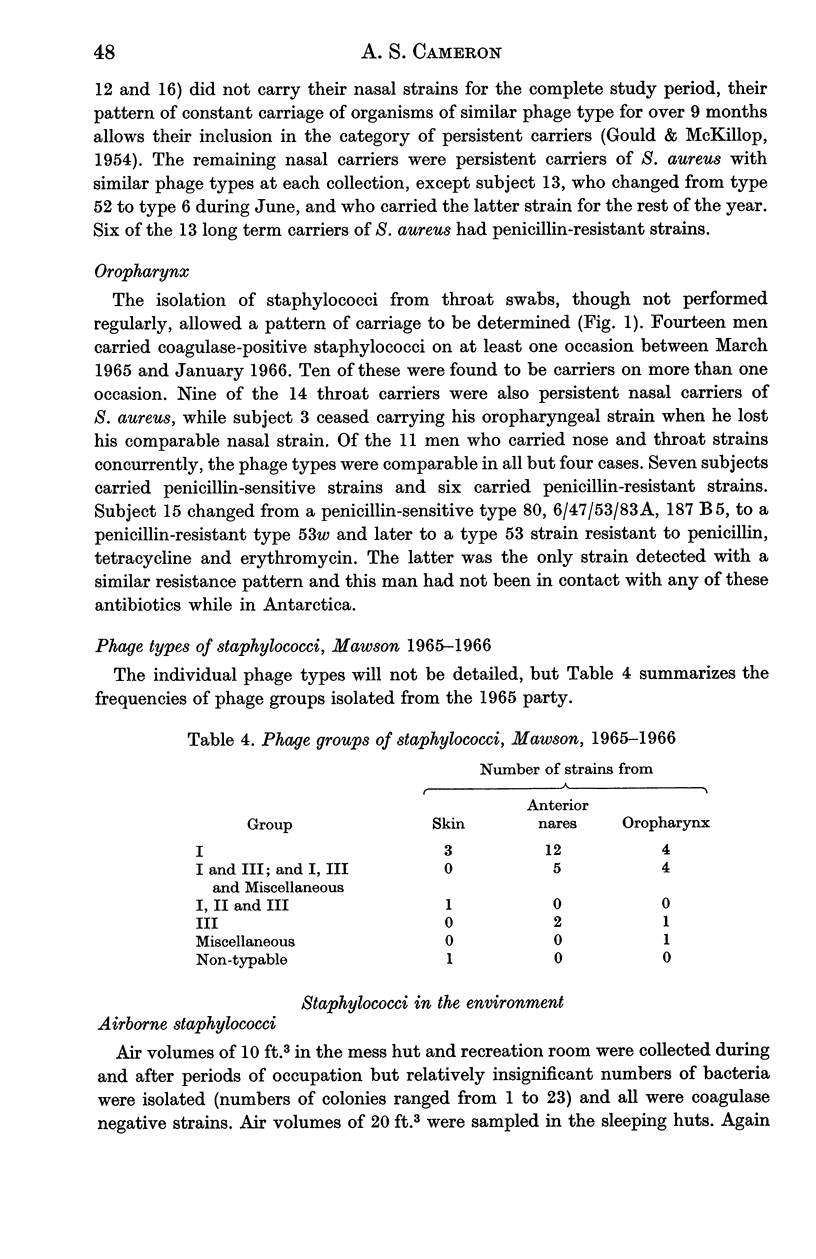
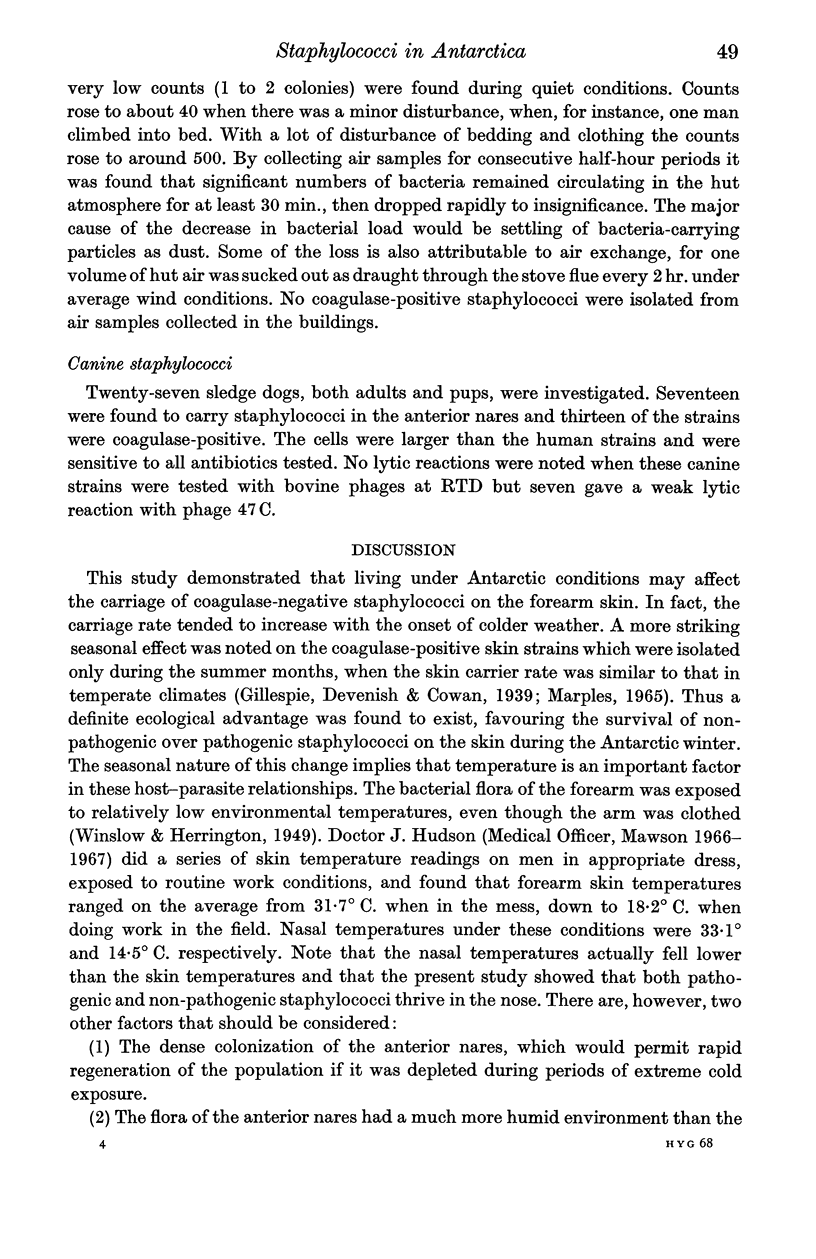
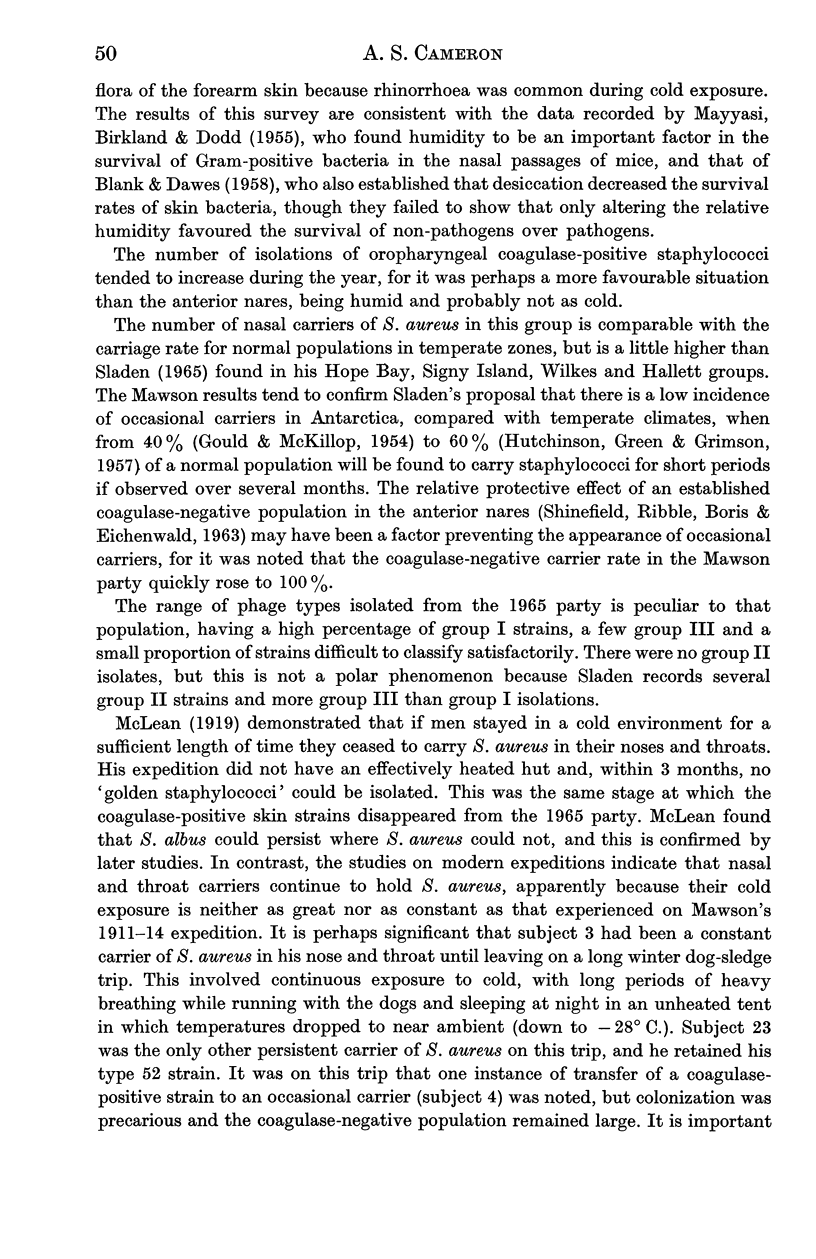
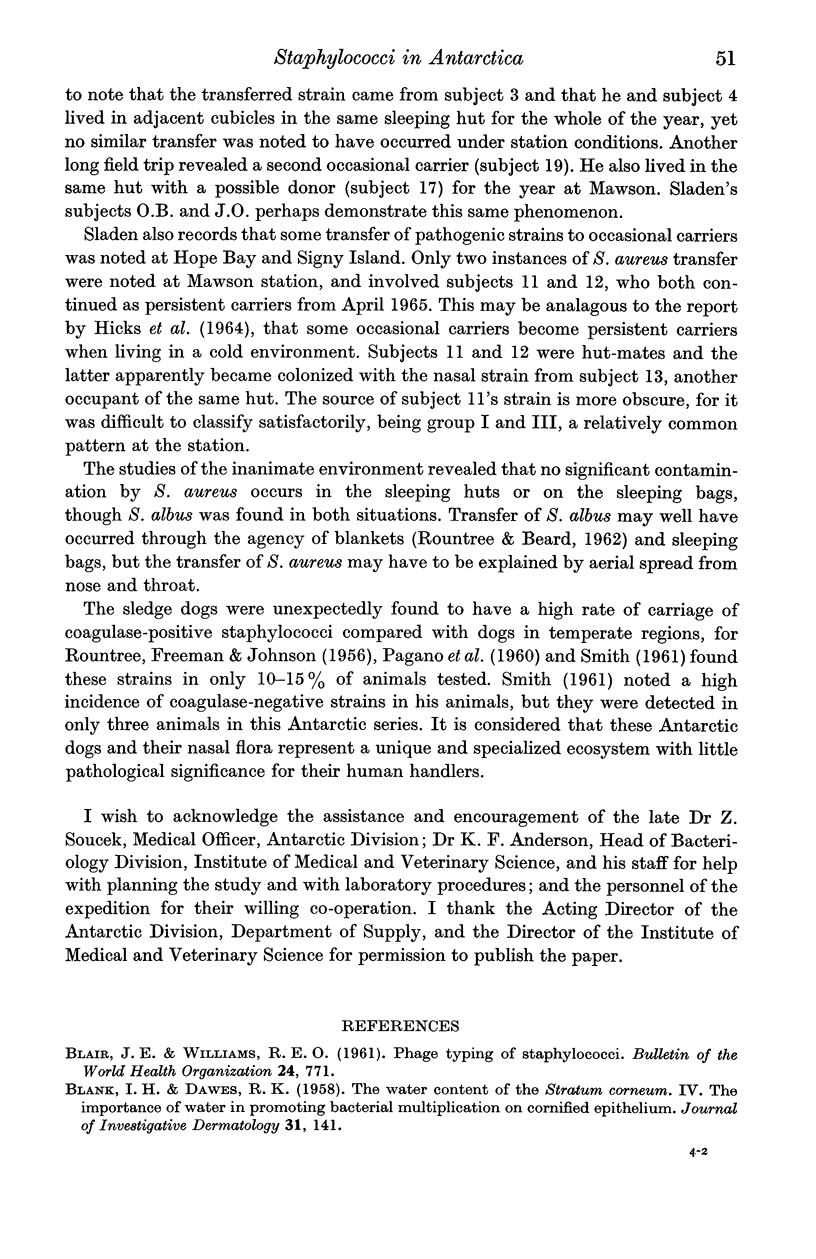
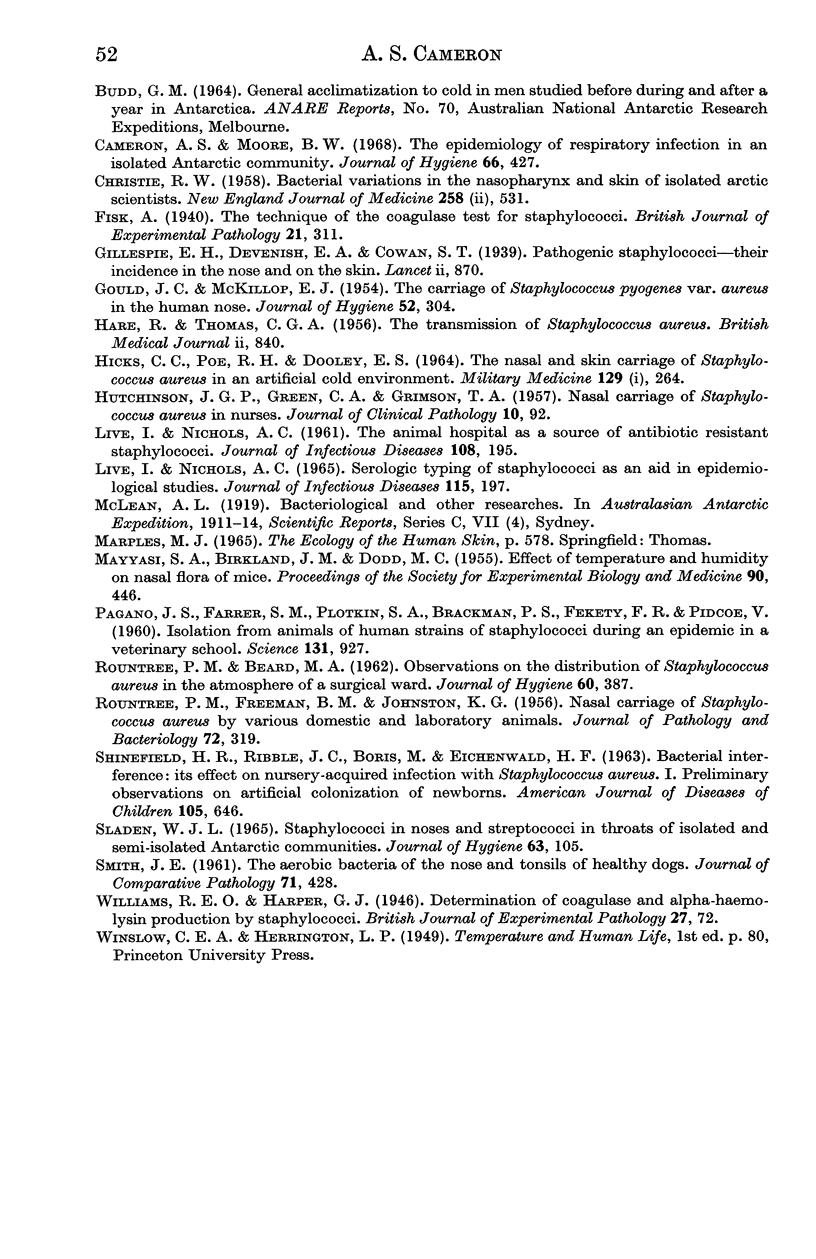
Selected References
These references are in PubMed. This may not be the complete list of references from this article.
- BLANK I. H., DAWES R. K. The water content of the stratum corneum. IV. The importance of water in promoting bacterial multiplication on cornified epithelium. J Invest Dermatol. 1958 Sep;31(3):141–145. [PubMed] [Google Scholar]
- CHRISTIE R. W. Bacterial variations in the nasopharynx and skin of isolated Arctic scientists. N Engl J Med. 1958 Mar 13;258(11):531–533. doi: 10.1056/NEJM195803132581104. [DOI] [PubMed] [Google Scholar]
- Cameron A. S., Moore B. W. The epidemiology of respiratory infection in an isolated Antarctic community. J Hyg (Lond) 1968 Sep;66(3):427–437. doi: 10.1017/s0022172400041292. [DOI] [PMC free article] [PubMed] [Google Scholar]
- FREEMAN B. M., JOHNSTON K. G., ROUNTREE P. M. Nasal carriage of Staphylococcus aureus by various domestic and laboratory animals. J Pathol Bacteriol. 1956 Jul;72(1):319–321. doi: 10.1002/path.1700720137. [DOI] [PubMed] [Google Scholar]
- GOULD J. C., McKILLOP E. J. The carriage of Staphylococcus pyogenes var. aureus in the human nose. J Hyg (Lond) 1954 Sep;52(3):304–310. doi: 10.1017/s0022172400027509. [DOI] [PMC free article] [PubMed] [Google Scholar]
- HARE R., THOMAS C. G. The transmission of Staphylococcus aureus. Br Med J. 1956 Oct 13;2(4997):840–844. doi: 10.1136/bmj.2.4997.840. [DOI] [PMC free article] [PubMed] [Google Scholar]
- HICKS C. C., POE R. H., DOOLEY E. S. THE NASAL AND SKIN CARRIAGE OF STAPHYLOCOCCUS AUREUS IN AN ARTIFICIAL COLD ENVIRONMENT. Mil Med. 1964 Mar;129:264–271. [PubMed] [Google Scholar]
- HUTCHISON J. G., GREEN C. A., GRIMSON T. A. Nasal carriage of Staphylococcus aureus in nurses. J Clin Pathol. 1957 Feb;10(1):92–95. doi: 10.1136/jcp.10.1.92. [DOI] [PMC free article] [PubMed] [Google Scholar]
- LIVE I., NICHOLS A. C. SEROLOGICAL TYPING OF STAPHYLOCOCCI AS AN AID IN EPIDEMIOLOGICAL STUDIES. J Infect Dis. 1965 Apr;115:197–204. doi: 10.1093/infdis/115.2.197. [DOI] [PubMed] [Google Scholar]
- LIVE I., NICHOLS A. C. The animal hospital as a source of antibiotic-resistant staphylococci. J Infect Dis. 1961 Mar-Apr;108:195–204. doi: 10.1093/infdis/108.2.195. [DOI] [PubMed] [Google Scholar]
- MAYYASI S. A., BIRKELAND J. M., DODD M. C. Effect of temperature and humidity on nasal flora of mice. Proc Soc Exp Biol Med. 1955 Nov;90(2):446–448. doi: 10.3181/00379727-90-22060. [DOI] [PubMed] [Google Scholar]
- PAGANO J. S., FARRER S. M., PLOTKIN S. A., BRACHMAN P. S., FEKETY F. R., PIDCOE V. Isolation from animals of human strains of staphylococci during an epidemic in a veterinary school. Science. 1960 Mar 25;131(3404):927–928. doi: 10.1126/science.131.3404.927. [DOI] [PubMed] [Google Scholar]
- ROUNTREE P. M., BEARD M. A. Observations on the distribution of Staphylococcus aureus in the atmosphere of a surgical ward. J Hyg (Lond) 1962 Sep;60:387–400. doi: 10.1017/s0022172400020507. [DOI] [PMC free article] [PubMed] [Google Scholar]
- SHINEFIELD H. R., RIBBLE J. C., BORIS M., EICHENWALD H. F. Bacterial interference: its effect on nursery-acquired infection with Staphylococcus aureus. I. Preliminary observations on artificial colonzation of newborns. Am J Dis Child. 1963 Jun;105:646–654. [PubMed] [Google Scholar]
- SLADEN W. J. STAPHYLOCOCCI IN NOSES AND STREPTOCOCCI IN THROATS OF ISOLATED AND SEMI-ISOLATED ANTARCTIC COMMUNITIES. J Hyg (Lond) 1965 Mar;63:105–116. doi: 10.1017/s0022172400045010. [DOI] [PMC free article] [PubMed] [Google Scholar]
- SMITH J. E. The aerobic bacteria of the nose and tonsils of healthy dogs. J Comp Pathol. 1961 Oct;71:428–433. doi: 10.1016/s0368-1742(61)80047-7. [DOI] [PubMed] [Google Scholar]


